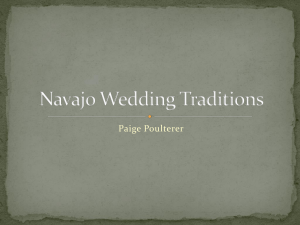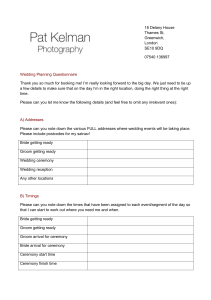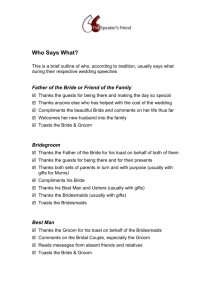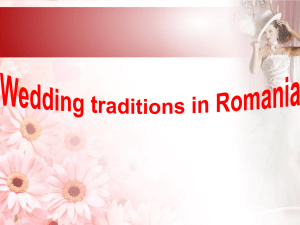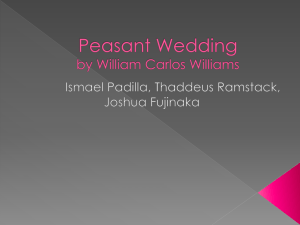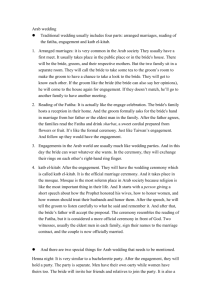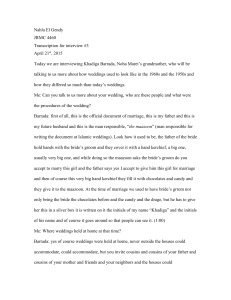Civil War Wedding Ideas
advertisement
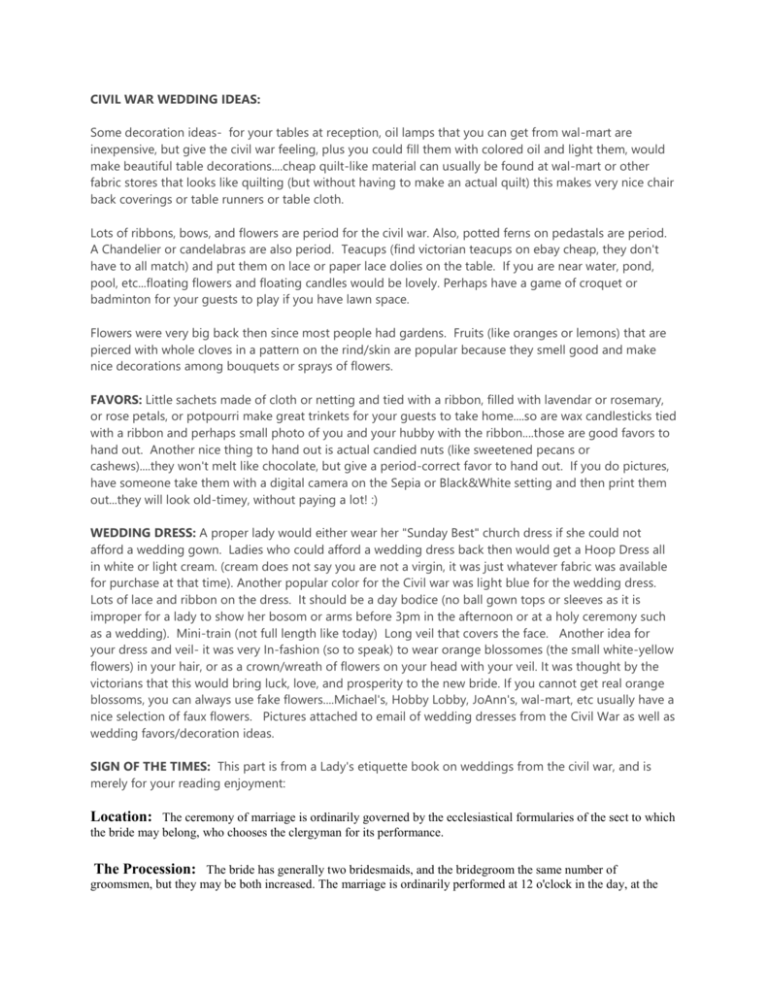
CIVIL WAR WEDDING IDEAS: Some decoration ideas- for your tables at reception, oil lamps that you can get from wal-mart are inexpensive, but give the civil war feeling, plus you could fill them with colored oil and light them, would make beautiful table decorations....cheap quilt-like material can usually be found at wal-mart or other fabric stores that looks like quilting (but without having to make an actual quilt) this makes very nice chair back coverings or table runners or table cloth. Lots of ribbons, bows, and flowers are period for the civil war. Also, potted ferns on pedastals are period. A Chandelier or candelabras are also period. Teacups (find victorian teacups on ebay cheap, they don't have to all match) and put them on lace or paper lace dolies on the table. If you are near water, pond, pool, etc...floating flowers and floating candles would be lovely. Perhaps have a game of croquet or badminton for your guests to play if you have lawn space. Flowers were very big back then since most people had gardens. Fruits (like oranges or lemons) that are pierced with whole cloves in a pattern on the rind/skin are popular because they smell good and make nice decorations among bouquets or sprays of flowers. FAVORS: Little sachets made of cloth or netting and tied with a ribbon, filled with lavendar or rosemary, or rose petals, or potpourri make great trinkets for your guests to take home....so are wax candlesticks tied with a ribbon and perhaps small photo of you and your hubby with the ribbon....those are good favors to hand out. Another nice thing to hand out is actual candied nuts (like sweetened pecans or cashews)....they won't melt like chocolate, but give a period-correct favor to hand out. If you do pictures, have someone take them with a digital camera on the Sepia or Black&White setting and then print them out...they will look old-timey, without paying a lot! :) WEDDING DRESS: A proper lady would either wear her "Sunday Best" church dress if she could not afford a wedding gown. Ladies who could afford a wedding dress back then would get a Hoop Dress all in white or light cream. (cream does not say you are not a virgin, it was just whatever fabric was available for purchase at that time). Another popular color for the Civil war was light blue for the wedding dress. Lots of lace and ribbon on the dress. It should be a day bodice (no ball gown tops or sleeves as it is improper for a lady to show her bosom or arms before 3pm in the afternoon or at a holy ceremony such as a wedding). Mini-train (not full length like today) Long veil that covers the face. Another idea for your dress and veil- it was very In-fashion (so to speak) to wear orange blossomes (the small white-yellow flowers) in your hair, or as a crown/wreath of flowers on your head with your veil. It was thought by the victorians that this would bring luck, love, and prosperity to the new bride. If you cannot get real orange blossoms, you can always use fake flowers....Michael's, Hobby Lobby, JoAnn's, wal-mart, etc usually have a nice selection of faux flowers. Pictures attached to email of wedding dresses from the Civil War as well as wedding favors/decoration ideas. SIGN OF THE TIMES: This part is from a Lady's etiquette book on weddings from the civil war, and is merely for your reading enjoyment: Location: The ceremony of marriage is ordinarily governed by the ecclesiastical formularies of the sect to which the bride may belong, who chooses the clergyman for its performance. The Procession: The bride has generally two bridesmaids, and the bridegroom the same number of groomsmen, but they may be both increased. The marriage is ordinarily performed at 12 o'clock in the day, at the church, which is first entered by the bride resting on the arm of her father, uncle, or whomsoever is to "give her away." Next comes the bridegroom, with the mother or nearest matronly female relative. Then follow the groomsmen and bridesmaids, arm in arm. The immediate relatives complete the procession to the altar, where the bride and bridegroom take their places in advance, with the parents a little behind, and the rest gathered in a group about them. The Ring: The bridegroom takes care to provide the wedding ring, and have it in readiness at the proper moment when called upon to put it on. He then places it on the third finger from, but not counting the thumb of the left hand. The Kiss: When the ceremony is over, the question sometimes arises whether the bride is to be kissed by the bridegroom. We should leave its decision to the instinct of affection were we not solemnly warned by a portentous authority on deportment that "the practice is decidedly to be avoided; it is never followed by people in the best society. A bridegroom with any tact will take care that this is known to his wife, since any disappointment of expectations would be a breach of good breeding. The bride is congratulated by all her friends in the church, and elderly relatives will kiss her in congratulation." This is, of course, now settled beyond all peradventure of doubt by the fact that, according to the same authority, "The queen was kissed by the Duke of Sussex, but not by Prince Albert . The Receiving Line: The married pair then return to the bride's house together, taking precedence of all, and, on arrival, assume a standing position at one end of the reception-room and await the coming of the invited guests, who, as they enter, are conducted by the groomsmen to offer their congratulations. The conventional breakfast or lunch closes the ceremony. Here are a couple poems that are civil war correct and still used today for wedding custom/superstition...(remember, Queen Victoria is the person who gave us all our modern day wedding customs- from the white gown, to the ceremony, to the reception, to the little things) Day to get married on: Marry on Monday for health, Tuesday for wealth, Wednesday the best day of all, Thursday for crosses, Friday for losses, and Saturday for no luck at all. Wedding Color (for flowers, ribbons, lace etc): White--chosen right Blue--love will be true Yellow--ashamed of her fellow Red--wish herself dead Black--wish herself back Grey--travel far away Pink--of you he'll always think Green-ashamed to be seen To bake in your grooms cake: (you put these trinkets in the grooms cake and whoever receives each item, is supposed to have the fortune that follows) The ring for marriage within a year; The penny for wealth, my dear; The thimble for an old maid or bachelor born; The button for sweethearts all forlorn. Month to marry in: A January bride will be a prudent housekeeper, and very good tempered. A February bride will be an affectionate wife, And a tender mother. A March bride will be a frivolous catterbox, Somewhat given to quarreling. An April bride will be inconsistent, or forceful, But well-meaning. A May bride will be handsome, agreeable, And practical. A June bride will be impetuous, And generous. A July bride will be handsome, But a trifle quick-tempered. An August bride will be agreeable, And practical as well. A September bride will be discreet, affable, And much liked. An October bride will be pretty, coquettish, Loving but jealous. A November bride will be liberal and kind, But sometimes cold. A December bride will be fond of novelty, Entertaining but extravagant Marry in May and you'll surely rue the day. Marry in September's shrine, Your living will be rich and fine. When leaving the reception to go on the honeymoon: As the couple drove off in a carriage pulled by white horses, the remaining party-goers threw satin slippers and rice after the couple. If a slipper landed in the carriage, it was considered good luck forever. If it was a left slipper, all the better. The Best Man should give your wedding officiant some money (aside from his official marriage license fee) as a sign of good luck on behalf of the happy couple. Seeing as the Catholic Rite of Marriage has not changed in several hundred years, this will give you an idea for the ceremony, Catholic style: The Catholic Ceremony After entry into the church, a greeting is usually issued by the priest, first to the bride and groom and then to their guests. This is followed by an opening prayer. The liturgy of the word includes readings from the Old and New Testaments, a re-sponsorial psalm, the "alleluia" before the Gospel, and a Gospel reading. The selections may be read by the priest or by honored members of the wedding party. The homily, or sermon, elaborates on the marriage theme. If the priest knows the couple well, he may interlace his homily with personal references. The exchange of rings follows the exchange of vows. The best man, who usually has both rings, gives the bride's ring to the priest, who blesses it and gives it to the bridegroom, who places it on the bride's finger. In a double ring ceremony, after the bride receives her ring, the blessing and presentation will be repeated for the bridegroom's ring. Some brides may consider honoring the role of the Virgin Mary as Christ's Mother, by presenting flowers at a side altar dedicated to Mary. (This is optional). The Prayer of the Faithful follows which may also include personal prayer by the couple. During a Mass, the Liturgy of the Eucharist is said at this time. Those who are chosen to bring gifts of wine and bread to the altar carry out their role at this point and the liturgy begins. The priest then offers the Nuptial Blessing. The conclusion of a wedding without Mass is the Lord's Prayer and a Blessing. At a Mass, the service ends with a Blessing and Dismissal. The Protestant version is this: The Protestant ceremony follows this schedule: 1- The Processional begins down the center aisle of the church. The order is as follows: groomsmen, bridesmaids, maid of honor, flower girl, ring bearer, the bride and her father. In some cases the parents of the bride and of the groom are included in the processional. Traditionally, the groom and best man stand at the front of the church with the clergy, awaiting the entrance of the wedding party. 2- The groom waits for the bride at the front of the church. 3- A prayer is recited passages from scripture passages are announced 4- The minister/officiant asks the parents of the bride if they "give their" daughter in marriage to the groom. 5- Vows are read and rings are exchanged. Most Protestant churches allow personalized vows and adaptations as long as they don't contradict Christian principles. 6- A Unity Candle may be lit in honor of joining of the two lives. 7- The benediction is presented by the minister 8- The ceremony concludes with the Recessional, as the couple and wedding party exit the church. Protestant wedding ceremonies can take as little as fifteen minutes, or last as long as the couple would like. In some weddings the guests are included as participants in the service by sharing in hymns, readings and responses to the couple's exchange of vows. The addition of music, readings, and auxiliary rituals (i.e., the rose ceremony) are ways in which the ceremony may be extended. Vows for ring exchange: “ ... take this ring as a sign of my love and fidelity. In the name of the Father, and the Son, and of the Holy Spirit.” (from traditional Catholic vows) "... to have and to hold from this day forward, for better for worse, for richer for poorer, in sickness and in health, to love and to cherish, until we are parted by death." (from traditional Anglican vows) "With this ring I thee wed, and all my worldly goods I thee endow. In sickness and in health, in poverty or in wealth, 'til death do us part." (from traditional Baptist vows during exchange of rings) "I give you this ring as a sign of my love and faithfulness. Receive this ring as a token of wedded love and faith." (from traditional Lutheran vows) RECEMPTION FOOD: Try cuttingsandwiches out with different flower or shaped cookie-cutters to give a "finger-food" feel....or get some petit fours (found at a local bakery) or fresh cut fruit and veggie tray for food....these are all simple, non-expensive food items, that are period correct.....pie and cake are as well....maybe small fired chicken legs or hotwings....potato salad....cole slaw...any of these traditional picnic foods are originally from the civil war period... If you don't want to rent an area for a reception, try having a victorian picnic on several blankets....have your guests picnic with you on the lawn...then play croquet or badminton, or horseshoes....then pose for pictures near a garden or grove of trees or a stream, pond, or cluster of rocks...

